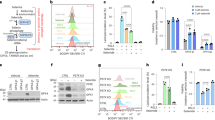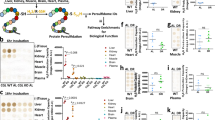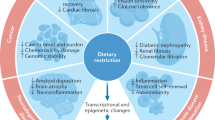Abstract
IN a preliminary communication1 and in more detailed work2, we have shown that α-tocopherol and selenium independently control ubiquinone-levels in the rat, and a similar relation between tocopherol and ubiquinone has been found in the rabbit8. We have proposed a theory of vitamin E function which can be briefly summarized as follows. Although animal species vary considerably in their requirements for tocopherol, an even more important variation exists in individual tissue requirements for the vitamin, and in the rates at which tissues become depleted in vitamin E deficiency. Thus, in the rat, uterus normally contains a relatively high concentration of tocopherol and is rapidly depleted, whereas, in the rabbit, skeletal muscle is the tissue most readily depleted. In both these tissues, diminished ubiquinone -levels are the result and may be causally related to the specific syndromes of vitamin E-deficiency, fœtal resorption in the rat and muscular dystrophy in the rabbit. The remarkable species differences in vitamin E deficiency are, according to this hypothesis, a reflexion of local tissue tocopherol deficiencies.
This is a preview of subscription content, access via your institution
Access options
Subscribe to this journal
Receive 51 print issues and online access
$199.00 per year
only $3.90 per issue
Buy this article
- Purchase on Springer Link
- Instant access to full article PDF
Prices may be subject to local taxes which are calculated during checkout
Similar content being viewed by others
References
Green, J., Edwin, E. E., Diplock, A. T., and Bunyan, J., Biochem. Biophys. Res. Comm., 2, 388 (1960).
Edwin, E. E., Diplock, A. T., Bunyan, J., and Green, J., Biochem. J. (in the press).
Green, J., Diplock, A. T., Bunyan, J., and Edwin, E. E., Biochem. J. (in the press).
Schwarz, K., and Foltz, C. M., J. Amer. Chem. Soc., 79, 3292 (1957).
Dam, H., Nielsen, G. K., Prange, I., and Søendergaard, E., Experientia, 13, 493 (1957).
Harris, P. L., Ludwig, M. I., and Schwarz, K., Proc. Soc. Exp. Biol. Med., 97, 686 (1958).
Muth, O. H., Oldfield, J. E., Schubert, J. R., and Remmert, L. F., Amer. J. Vet. Res., 20, 231 (1959).
Diplock, A. T., Green, J., Edwin, E. E., and Bunyan, J., Biochem. J., 76, 563 (1960).
Author information
Authors and Affiliations
Rights and permissions
About this article
Cite this article
GREEN, J., EDWIN, E., DIPLOCK, A. et al. Role of Selenium in Relation to Ubiquinone in the Rat. Nature 189, 748–749 (1961). https://doi.org/10.1038/189748a0
Issue Date:
DOI: https://doi.org/10.1038/189748a0
This article is cited by
Comments
By submitting a comment you agree to abide by our Terms and Community Guidelines. If you find something abusive or that does not comply with our terms or guidelines please flag it as inappropriate.



